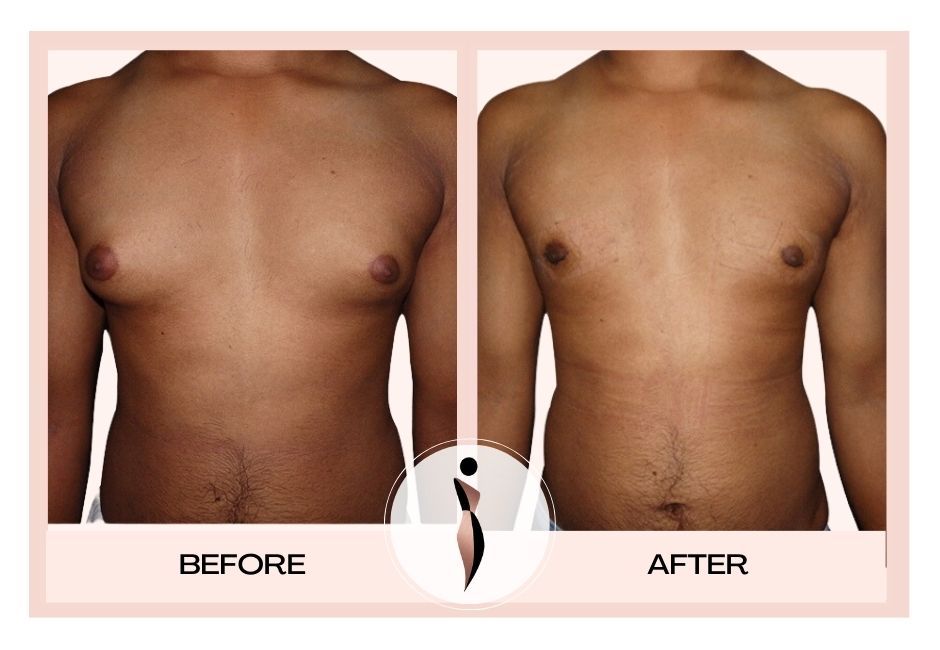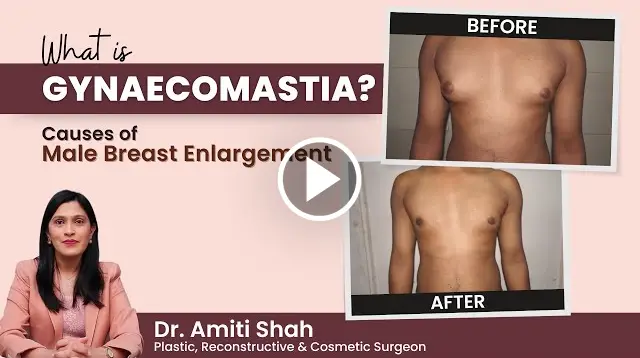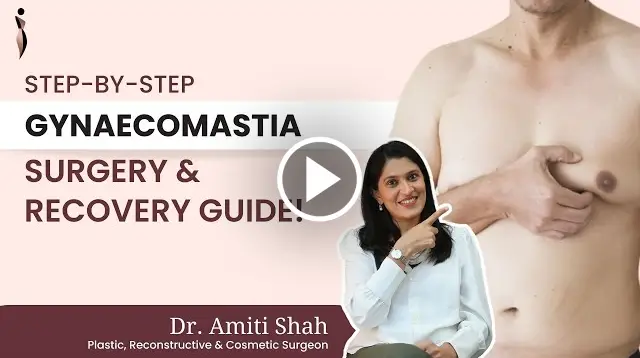Gynecomastia Surgery in Mumbai
Some men struggle with overdeveloped male breasts. When a man’s chest appears more feminine than masculine it can make him very self-conscious and embarrassed of his own appearance. Dr. Amiti Shah fully understands how disconcerting this can be for men. The condition is known as Gynecomastia – the enlargement of male breast tissue. This can be corrected through Gynecomastia Surgery in Mumbai, which Dr. Shah has successfully performed on several patients.
“All our dreams can come true, if we have the courage to pursue them.” – Walt Disney
What is gynecomastia?
Gynecomastia may present as a small, firm lump beneath the nipple, or as a more diffuse enlargement of the breast tissue. It can affect one or both breasts and can cause physical discomfort, as well as emotional distress or self-consciousness in some men.
What causes gynecomastia?
True Gynecomastia is the enlargement of glandular tissue, which is usually present in very small quantities in men. It is most commonly caused by hormonal imbalances during puberty in adolescents or in the elderly. Genetics, certain medications, alcohol, steroids and medical conditions can also result in Gynecomastia. Pseudo Gynecomastia is when obesity causes excess fat deposits in the breast.
Dr. Amiti Shah closely examines her patients to understand the root cause of their Gynecomastia to then be able to recommend the best Gynecomastia Surgery in Mumbai that can provide long-term results.
Who is the right candidate for male breast reduction?
- Good overall health: Candidates should be in good overall health and have no underlying medical conditions that could increase the risks associated with surgery.
- Stable weight: Candidates should have a stable weight, as significant weight gain or loss can affect the results of the procedure.
- Realistic expectations: Candidates should have realistic expectations for the results of the procedure, and understand that while gynecomastia correction can improve the appearance of the chest, it may not result in the dream look that you desire.
- Non-smokers: Smoking can increase the risks associated with surgery and can negatively impact healing, so candidates should be non-smokers or be willing to quit smoking prior to and after the procedure.
- Fully developed breasts: Candidates should have fully developed breasts, as the procedure is not recommended for adolescents who are still developing.
What are the types of procedures for gynecomastia?
There are several types of procedures available to address gynecomastia, including:
- Liposuction: This procedure involves the use of a small, thin tube called a cannula to suction out excess fat from the breast area.
- Excision: This procedure involves the surgical removal of excess breast tissue through a small incision made around the edge of the areola (the darker skin around the nipple).
- Combination procedure: In some cases, a combination of liposuction and excision may be used to achieve the desired results.
How is post procedure recovery?
The specific recovery time will depend on the type of procedure performed. For example, recovery time after liposuction alone may be shorter than recovery time after excision surgery. In general, patients can expect to return to work and normal activities within 1 week following surgery, but strenuous exercise and heavy lifting should be avoided for four weeks.
During the recovery period, patients should follow their surgeon’s post-operative instructions carefully to promote optimal healing and reduce the risk of complications.
What does corrective surgery involve?
Once Dr. Amiti Shah Best Gynecomastia Surgery Doctor In Mumbai has evaluated your condition, the treatment surgery can be done as a day care procedure. In most cases it involves Liposuction as well as a gland excision. With her experience and expertise, Dr. Shah ensures that the gland excision scar is very well camouflaged and is not visible.
Dr. Amiti Shah has helped several men suffering from Gynecomastia and regain their confidence after Gynecomastia Surgery in Mumbai. Book your consultation with her today to find out more and see what treatment might work best for you.
To visit Dr. Amiti Shah’s Clinic click here.



